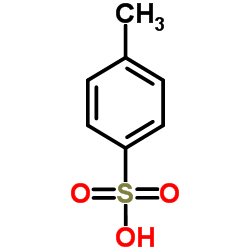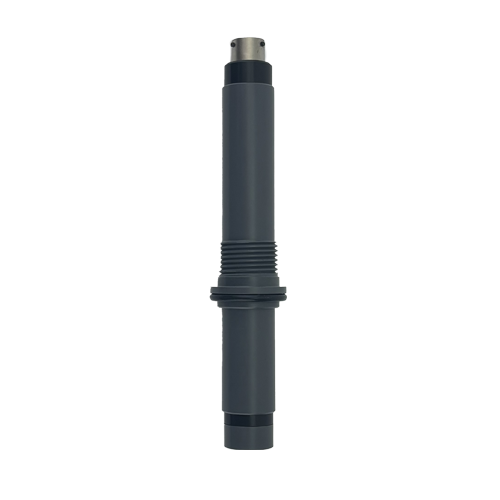Para-toluenesulfonic acid (PTSA) plays a pivotal role in the sensor industry, particularly in applications requiring high sensitivity and accuracy. Understanding PTSA’s structure is crucial for appreciating its importance in advanced sensing technology. This article reviews the PTSA molecular structure, physical and chemical properties, and significant advantages in sensor applications.
Overview of PTSA
PTSA, or p-toluenesulfonic acid, is an organic compound with the chemical formula CH3C6H4SO3H. It belongs to the class of aromatic sulfonic acids and is commonly used in various industrial applications due to its strong acidic nature and excellent solubility in water and organic solvents. PTSA appears as a colorless crystalline solid at room temperature, making it easy to handle, weigh, and store.
Molecular Structure of PTSA
The molecular structure of PTSA is a key factor in its effectiveness and versatility. It consists of a benzene ring with a methyl group (CH3) and a sulfonic acid group (SO3H) attached to it. The benzene ring provides stability and resonance, thus enhancing the compound’s ability to maintain its structure under various conditions. Meanwhile, the methyl group increases the compound’s hydrophobicity, whereas the sulfonic acid group imparts strong acidity and solubility in polar solvents.

Physical and Chemical Properties
PTSA is known for its strong acidic nature, with a pKa value of approximately -1.34 at room temperature. This strong acidity makes it an excellent catalyst for various chemical reactions. It is highly soluble in water, alcohol, and other polar organic solvents, facilitating its use in diverse industrial processes. PTSA is also chemically stable, maintaining its integrity under a wide range of temperatures (104°C melting point) and environmental conditions. In comparison to similar compounds, PTSA stands out due to its combination of strong acidity, stability, and solubility. These features make it an ideal choice for applications requiring high performance and reliability.
Significance of PTSA Structure in Sensor Technology
The unique structure of PTSA enhances its performance in sensing technology. Due to this structure, it exhibits strong fluorescent properties that make it an ideal tracer in water treatment systems. Hence allowing for precise measurement and control of chemical additives. In addition, PTSA’s stability and solubility ensure consistent performance in various environments, contributing to accurate and reliable sensor readings.
PTSA Sensor in Cooling Towers
The process starts with the introduction of PTSA into the water along with treatment chemicals. As the water circulates, PTSA remains consistent, serving as a reliable indicator of the chemical concentration. In cooling towers, PTSA sensors work by emitting ultraviolet (UV) light into the water, which the PTSA molecules absorb and then emit as fluorescence. This emitted light is then measured by the sensor, providing a direct correlation to the PTSA concentration in the water. PTSA-based sensors can detect minute concentration of contaminants, thus, enabling precise control of chemical dosages. As a result, systems that deploy them usually record optimized performance, cost savings, and a reduction in environmental impact. Moreover, this enhanced sensitivity and accuracy is the foundation for real-time monitoring that enables operators adjust process parameters promptly. Therefore, preventing issues such as scaling, corrosion, and biological growth. Some best practices to adopt when deploying PTSA sensors include:
- Calibration: Regularly calibrate the PTSA sensor to maintain accuracy. Because, calibration ensures that the sensor readings remain consistent with the known PTSA concentrations.
- Maintenance: Clean the sensor periodically to prevent contamination from debris or biological growth, which can interfere with the sensor’s accuracy.
- Integration: Connect the sensor to a centralized monitoring system for continuous tracking and automated chemical dosing, which enhances operational efficiency.
Other Use Cases
Apart from cooling towers, which is an open loop system, the deployment of PTSA sensors can be in a variety of setups.
- Boiler Feedwater Monitoring: PTSA sensors help monitor the chemical levels in boiler feedwater, preventing scaling and corrosion within the boiler system.
- Closed-Loop Systems: In closed-loop cooling systems, PTSA sensors track the chemical balance, ensuring that the system remains free from contaminants and operates efficiently.
- Chilled Water Systems: PTSA sensors help to maintain the chemical balance in chilled water systems, preventing the growth of bacteria and algae, which can clog pipes and reduce system efficiency.
PTSA Sensor Products from AlpHa
AlpHa integrates PTSA into our sensor products to leverage its unique properties for superior performance. One of these offerings is the XC-PTSA sensor, which utilizes patent-pending optical technology to provide continuous, direct PTSA measurements. By taking advantage of the PTSA structure, this sensor is capable of the following:
- Minimum detection limit under 1 ppb with a resolution of 0.01 ppb, as well as a PTSA range between 0 and 650 µg / L.
- Advanced optical filtering to prevent turbidity interference.
- Automatic temperature compensation with ability to operate between 0 and 50°C, while maintaining accuracy of ± 0.3°C.
- IP68 housing with material options including PVC/CPVC and metals like stainless steel, titanium, etc.
- Quick PTSA response (T90 ~150 ms), and temperature response (T90 ~ 60 seconds) times.
- Installs directly with all existing 1″ and 3/4″ tee fittings, with custom options available.
- Possibility of analog (4 – 20 mA or 0 – 5 V) or digital (RS-485 MODBUS RTU) output formats to integrate directly with third-party platforms.

PTSA Sensor Benefits
Using PTSA-based sensors offers numerous benefits, including:
- Improved Sensitivity and Accuracy: PTSA’s strong fluorescent properties and stability ensure precise measurements, even at low concentrations.
- Real-time Monitoring: PTSA sensors can provide real-time control of water treatment parameters, which can help prevent scale formation, corrosion, and microbial growth. This can improve the performance and longevity of cooling tower systems, while also reducing maintenance and chemical costs.
- Cost-Effectiveness: Accurate control of chemical treatments leads to optimized usage and reduced operational costs.
- Durability and Reliability: PTSA’s stability ensures consistent performance in various environments, enhancing sensor reliability.
- Environmental Benefits: Precise measurement and control contribute to reduced environmental impact and compliance with regulatory standards.
PTSA FAQs
What makes PTSA an ideal component for sensor calibration?
PTSA’s strong fluorescent properties and chemical stability make it an excellent choice for sensor calibration. Moreover, its consistent and reliable fluorescence allows for precise and accurate measurements.
How does PTSA contribute to environmental monitoring?
PTSA’s ability to act as a tracer in water systems helps monitor and control contaminants in surface and groundwater. This application is essential for environmental protection and emergency response.
Can PTSA-based sensors be used in industrial processes?
Yes, PTSA-based sensors are widely used in various industrial processes to monitor and control chemical reactions. Their stable and reliable properties ensure consistent product quality and process efficiency.
What are the benefits of using PTSA in water treatment plants?
PTSA helps maintain optimal levels of treatment chemicals, ensuring effective water treatment while minimizing costs and optimizing performance. Its accurate and reliable measurements are crucial for the efficient operation of water treatment plants.




